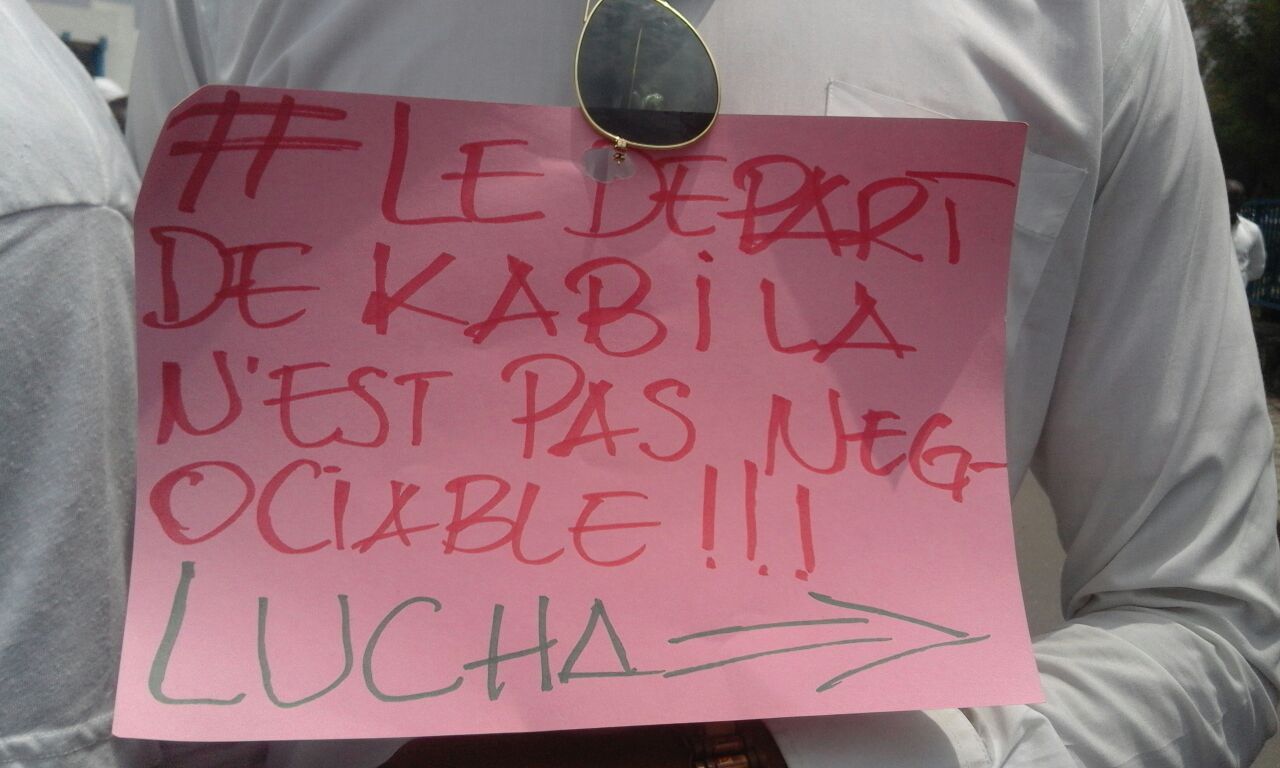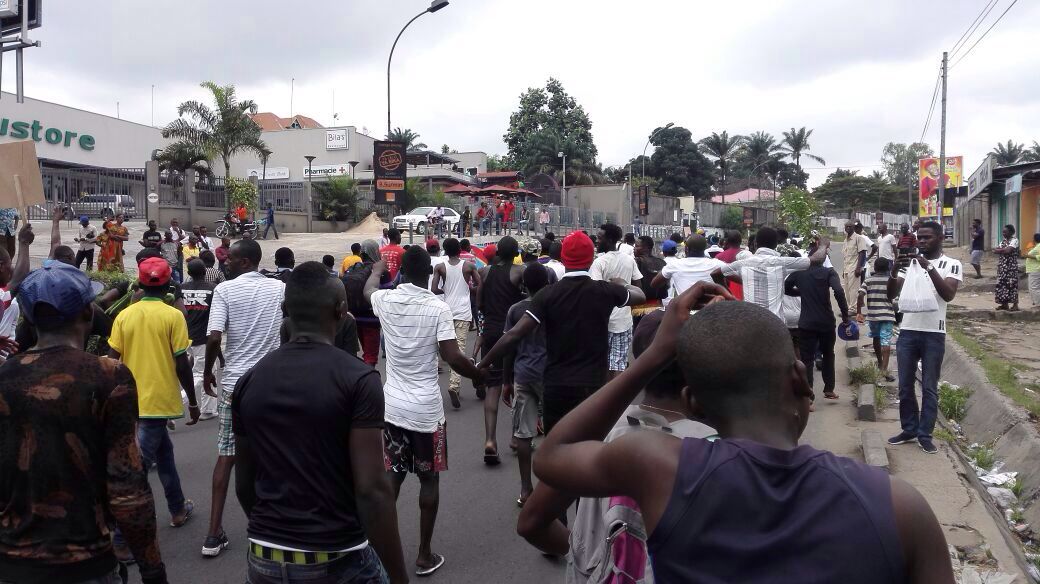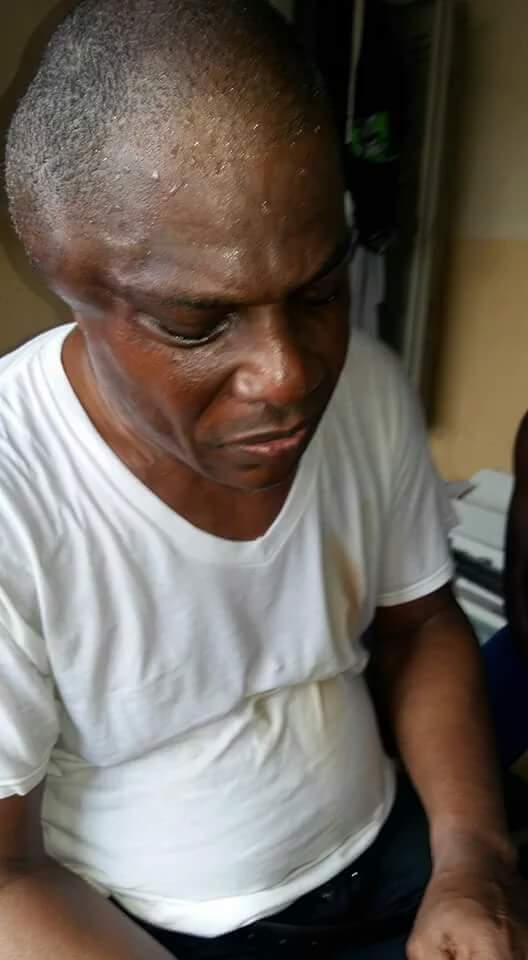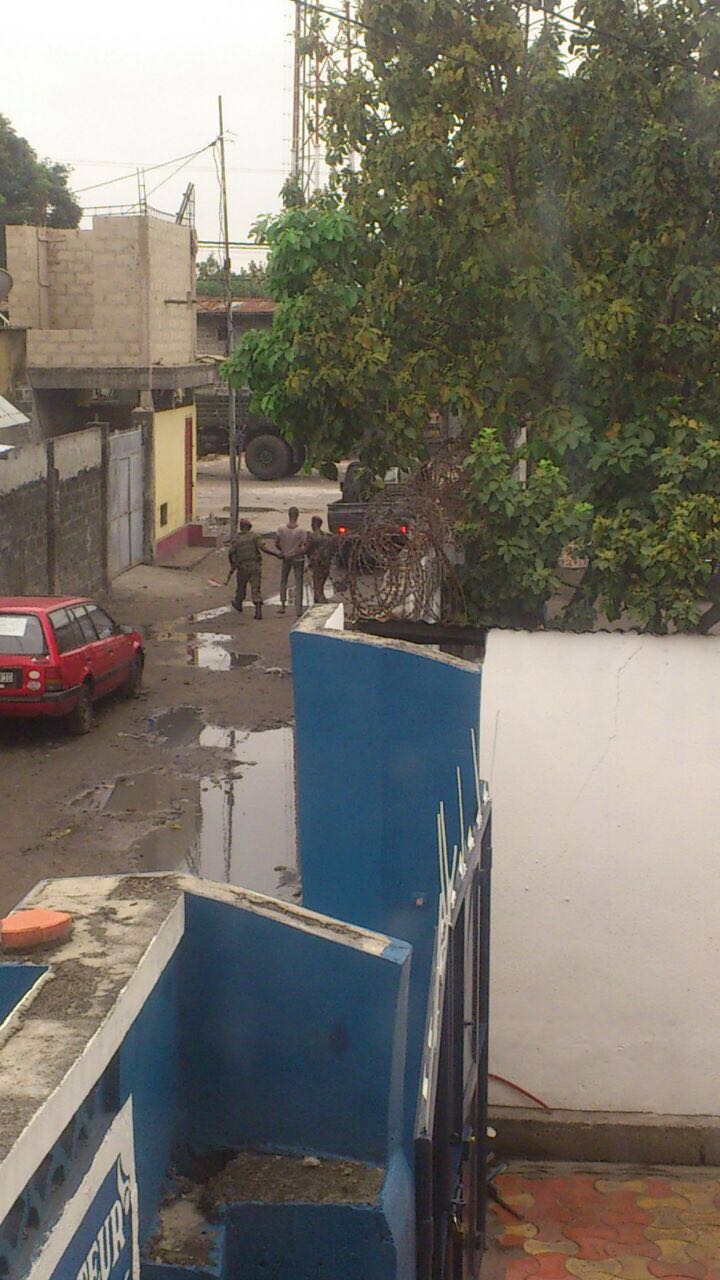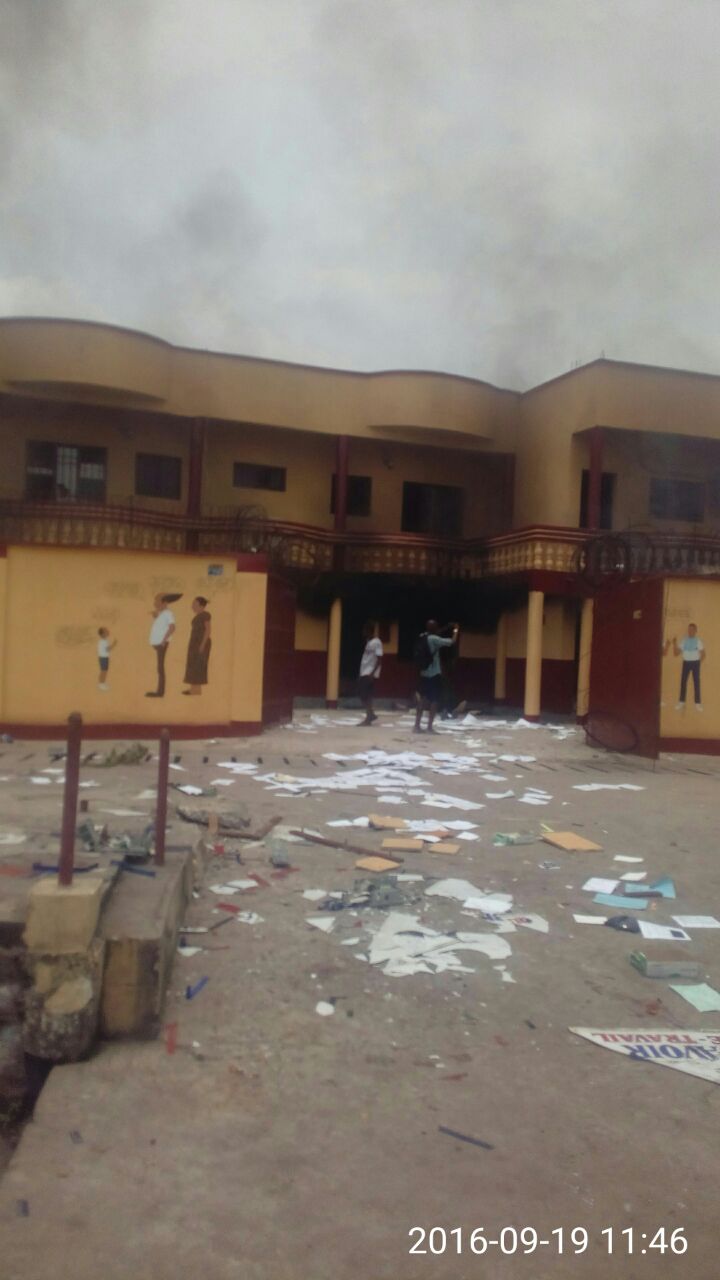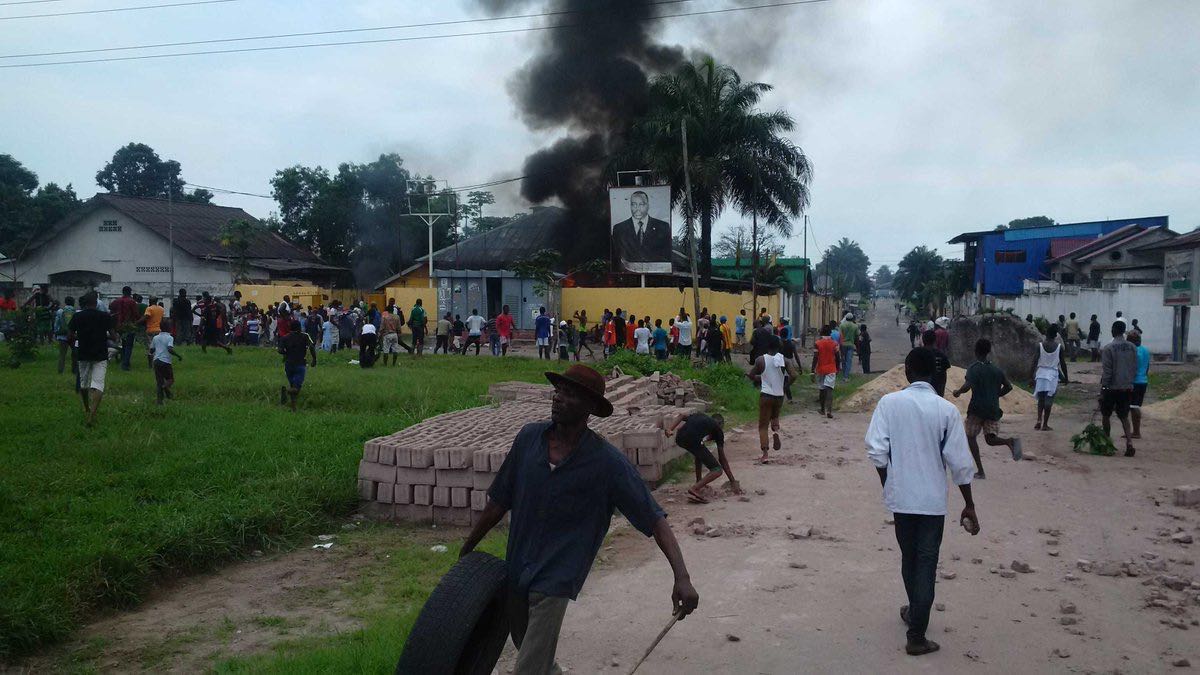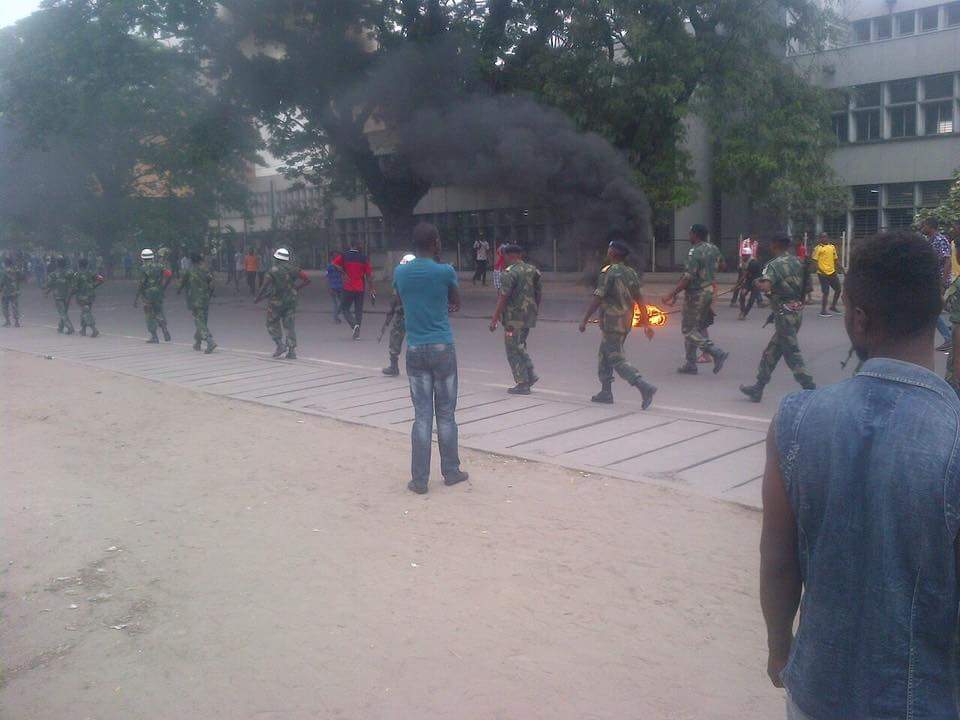Something happened yesterday in Kinshasa, a violent screeching of gears in the political crisis as the government decided to resort to brute force to quash popular protest. If before September 19 all eyes were focused on the political process––who was participating in the political dialogue, whether it was still possible to hold elections within the constitutional deadlines––today the center of attention are the streets of Kinshasa. Whether the African Union, the United Nations, and other diplomats will be able to wrest the momentum away from those streets, after the deaths of dozens of people, the torching of political party offices, and the lynching of policemen is up in the air.
It started in the popular areas of northeastern Kinshasa—Masina, Limete, Ndjili, Lemba––yesterday morning. Opposition parties had called for mass demonstrations on the day that, according to the constitution, the electoral commission was supposed to convene elections. The opposition told its supporters to convene in small groups and to converge on the electoral commission from different parts of the city to present their demands.
Tension had been rising in the two weeks leading up to the day. The ruling coalition had been able to persuade a small part of the opposition to join a dialogue facilitated by the African Union. They wanted to make sure that they could present some kind of deal regarding the electoral process before September 19th, so they could say that the political elites had reached a consensus for delaying elections. In the end, that move backfired. While the dialogue continues (it has been postponed sine die), a deal of sorts was announced to delay elections beyond 2016 and to forge a government of national unity. But the two dominant figures in the opposition––Etienne Tshisekedi and Moise Katumbi––boycotted the dialogue, making it appear like a tawdry and symbolic co-optation of marginal opposition parties rather than a grand bargain. The ruling coalition is now pushing for elections to be held in late 2018––a two year extension to President Kabila’s term.
At the same time, flyers began to appear across the city, calling for protests. It appears that the UDPS, in particular its youth league formed the backbone of the organization, but Martin Fayulu, Frank Diongo, and Joseph Olengankoy were also active. This flyer says (paraphrasing parts): “Congolese Stand Up! The hour is dark. The enemies of the people want to give Kabila a third term in office. Peaceful demonstration Monday 19 Sept 2016. No pillaging or stealing, march with your anger so your country can get democracy and a change in power. Brothers and sisters, the strength of the opposition lies in you the people. Don’t be saying tomorrow: ‘If only we had known!’”
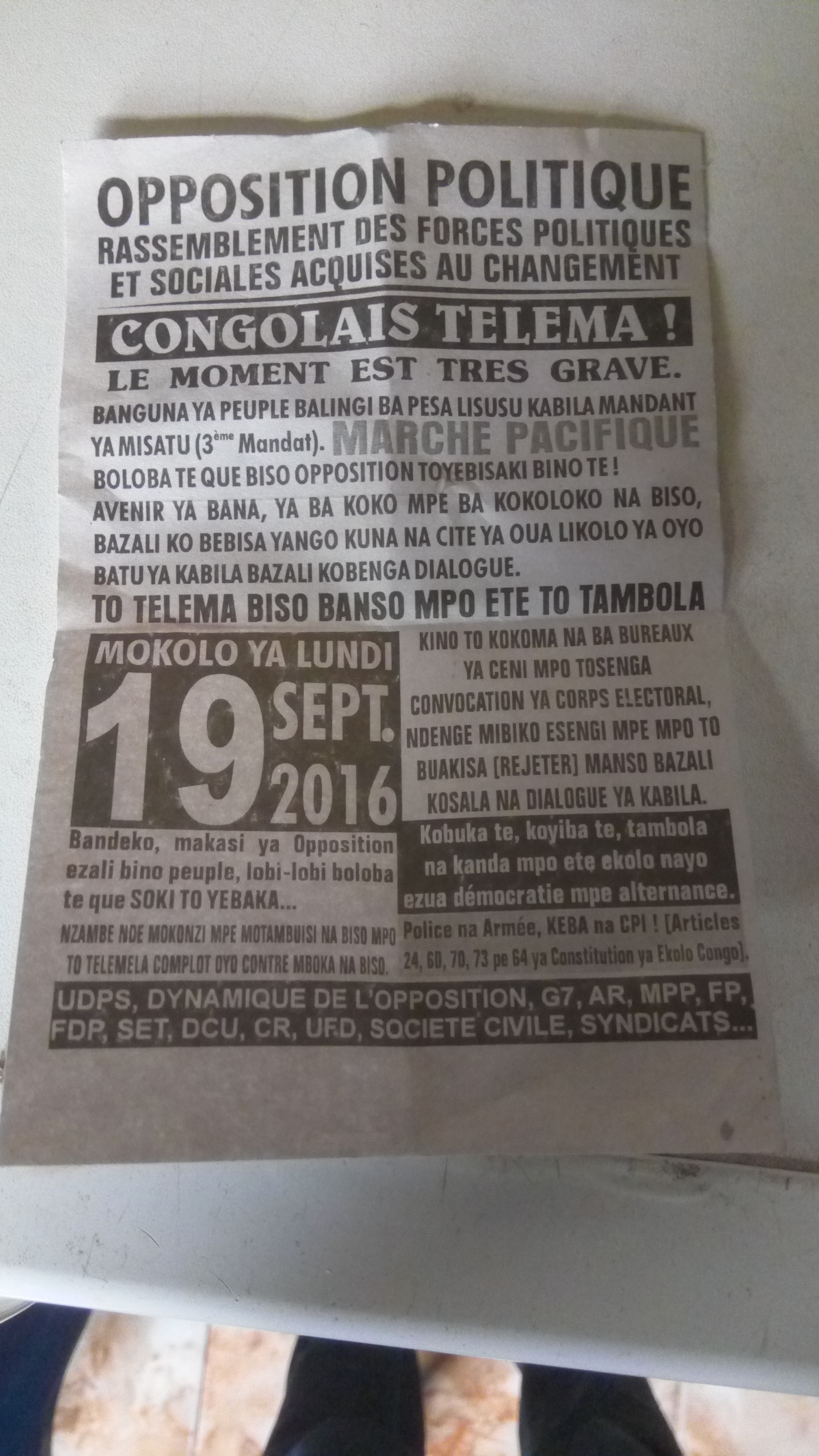
The opposition’s strategy of decentralizing protest was quickly met by the deployment of police and army, breaking up demonstrations in various parts of the capital. Things very quickly got very ugly. Information is still scant, but it is clear that security forces opened fire to disperse groups of protestors in various places, killing at least twenty. Elsewhere, they used tear gas. Several Congolese and at least one foreign journalist were arrested and then released. Clearly, an order had been given that no demonstration was to be allowed. Elsewhere around the country, the situation was calmer, although Goma also saw some violence.
The opposition reacted angrily. In one place, they set upon three policemen and burned them alive. Overall, given the repression, it was impossible for them to muster more than several thousand people in one place, but that was enough to make noise and to ransack several houses and offices belonging to leading government figures. This included: the party office of the ruling PPRD party in Limete, the main court building in Limete, the office of the RCD (which is participating in the dialogue), a school (Madame de Sévigné) belonging to a PPRD parliamentarian (Willy Bakonga), and the party of the CNC party of Pius Mwabilu (the owner of l’Avenir newspaper and member of the ruling coalition).
The protest was initially scheduled for one day. In the evening, however, the opposition coalition called for protests to continue. Overnight, the headquarters of at least four major opposition parties were set on fire: the UDPS, the MLP (of Frank Diongo), Fonus (of Joseph Olengankoy) and Ecidé (of Martin Fayulu), and the UN is reporting two more people killed today. The UDPS has said that five people were killed at its headquarters, which is usually guarded by its “militants.” This morning, isolated protests continued, concentrated in the eastern neighborhoods of the capital. There are far fewer people on the streets today, given the repression, but violence continues. A picture has been going around Twitter of youths who seized a police vehicle, and the army has been deployed in some neighborhoods, ostensibly to round up protesters.
How can the pieces be picked up after this?
Here are some pictures from yesterday:
